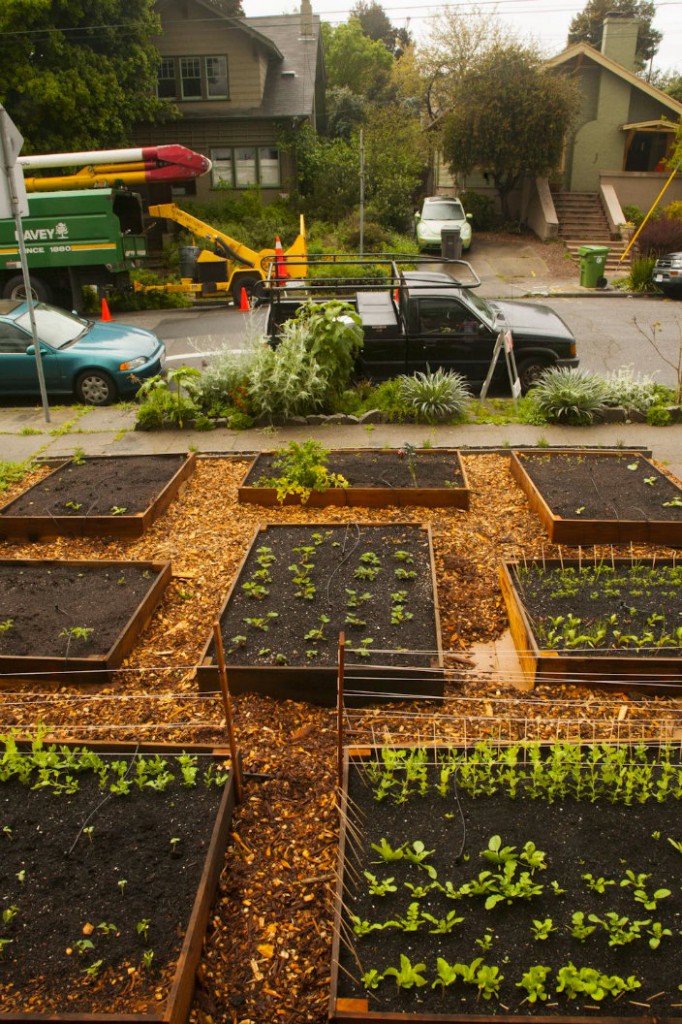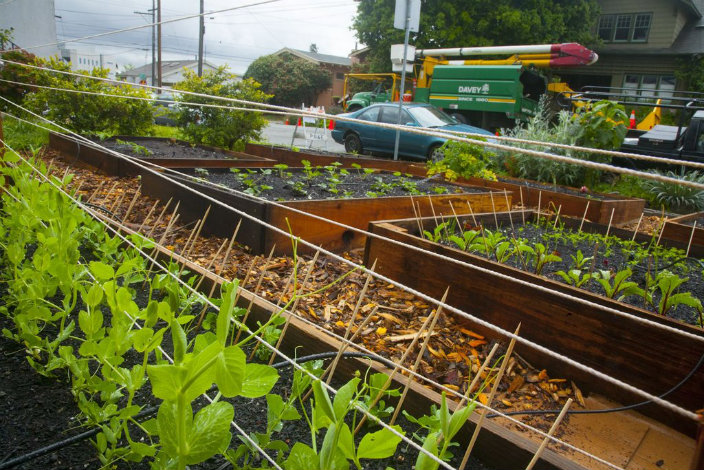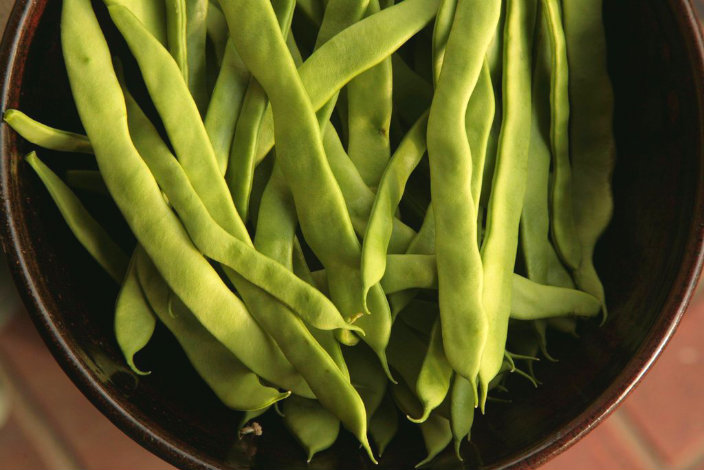OCT 11, 2015
If you’re fed up reading labels in the grocery store trying to find some real food that won’t kill you, I feel your pain. Not to worry, there is a solution and it’s awesome. The truth is, you don’t need to depend on food corporations or the government to keep you healthy. Why would you want to anyways? The
U.S. government’s just about as
corrupt as they come.
All you need is a bit of space (provided you don’t live in a cave, in which case you’d have to settle on button
mushrooms). Even if you have a
small apartment or a
small yard you can still grow quite a bit of food. You can even grow
tomatoes in a small studio apartment. For those of you that have a moderate to large sized yard, follow suit on the picture story below. This is how to create REAL health security. It’s time to stop consuming and start producing!
 |
| This used to be a lawn. |
 |
It started with eight 6’x4′ raised beds with 1″x10″x10′ reclaimed redwood barn siding.
|
 |
The beds were lined with cardboard, sprayed down with a hose, and then filled with fresh compost.
|
 |
Many seeds were sown directly, some were germinated in a backyard hoop cloche.
|
 |
Cinder blocks were filled with compost and used as a border to contain wood chips. Lavender, rosemary, thyme, and basil were planted in them to create a honey bee sanctuary. Planting a border of fragrant herbs is always a good way to deter pests.
|
 |
Setting up an irrigation system might be a little extra work, but it sure paid off quick! If you’re strapped for cash a typical sprinkler from your garden center will suffice. Or if you have a little extra money, investing in soaker hoses is well worth it too.
|
 |
The pathways were covered in cardboard and wood chips.
|

 |
Some beautiful arugula came first. By supplying plenty of nitrogen and pinching off flower buds as they appear, arugula’s harvest can become quite continual. The buds go great in salads too!
|
 |
Next came the spinach, which too benefited from the nitrogen rich compost.
|
 |
And beautiful beets.
|
 |
The radishes shot up quickly.
|
 |
| AAnd plenty of carrots. |
The loose medium produced some great results. One major advantage to raised beds is that the lack of foot traffic keeps the soil loose. Perfect for root vegetables!

 |
| AThe peas came in nicely. A bit of extra magnesium will do wonders. Add a bit of epsom salt to your soil before planting and supplement 1 tablespoon epsom per gallon of water as feed every now and then. It’s also important to keep phosphorus levels under control. Too much and the plant is unable to absorb the vital magnesium required for vigorous growth. (That’s the P in N P K) |
 |
The harvest became overwhelming.
|
 |
The green onions were amazing.
|
 |
This sign was installed by the sidewalk, next to a box filled with extras. The neighborhood ate an unbelievable amount of zucchini. I love this. If a few people on every block grew some food, there would be more than enough for every one.
|
 |
You can prune them for extended harvest. If the bulb is left in the ground it will grow another green stalk out of the stump. You can even bring them indoors in a cup of water. Here are some other veggies that will regrow similarly
|
 |
The beets just kept coming.
|
 |
Romano Musica Beans.
|
 |
They kept popping out new beans as long as the harvest was maintained.
|
Tomatillos.
 |
Delicious pickling cucumbers. Plant cucumbers with sunflowers to give them somewhere to climb and to prevent pests and disease.
|
 |
The peppers took a little longer to get going, but put out some spicy goodness. They could have done a bit better in a medium that holds less moisture. Peppers just like peas, LOVE epsom salt. (Beans too)
|
 |
The cherry tomatoes were as happy as could be in the compost. They benefit from being planted intermittently with basil.
|
 |
No garden’s complete without flowers. And our bee friends are especially attracted to hues of purple and blue blossoms.
|
 |
This beautiful squash blossom has a bee inside, hard at work! Limiting the amount of produce on a single vine can improve the yield. Any unwanted female blossoms that develop can be eaten on their own!
|
 |
| Add caption |
 |
Some basil and lavender along the sidewalk.
|
Anyone who might complain about a front yard garden may want to consider the neighbor’s inedible yards beforehand.
 |
Here’s a shot from the roof!
|
It appears as though front yard gardens make a neighborhood much more beautiful AND useful.
 |
And the neighbor on the other side.
|
GARDENS DON’T WASTE RESOURCES, THEY CREATE THEM.
Share:
Comments
comments
RELATED POSTS
Comments
Post a Comment